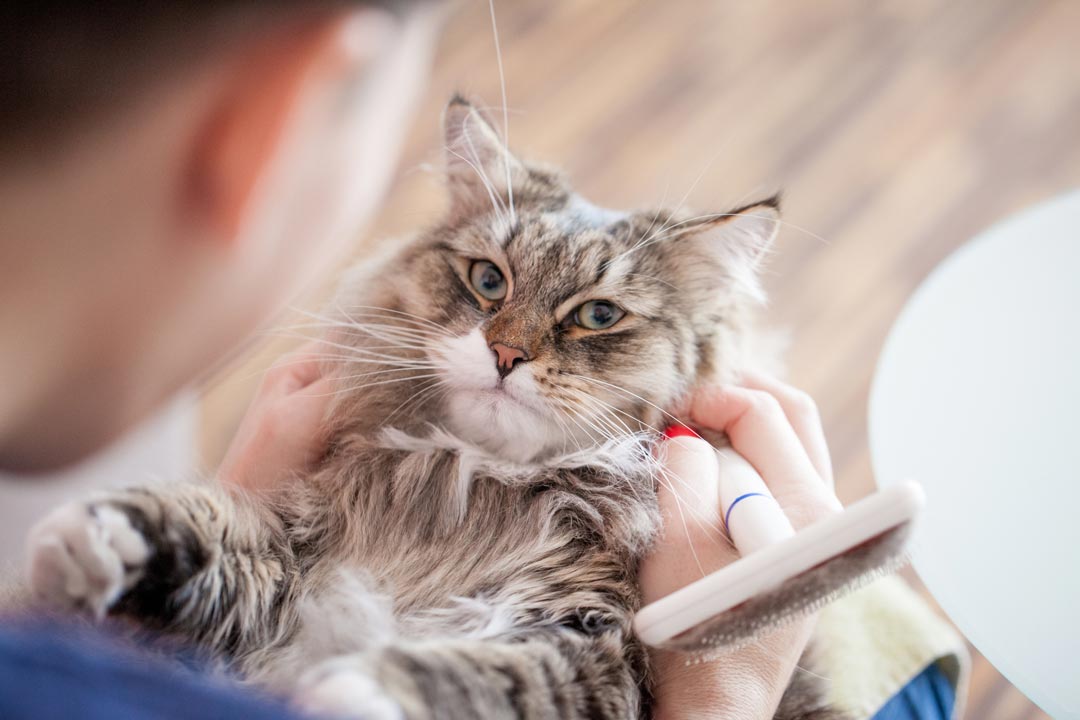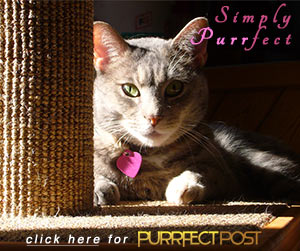Feeding Techniques to Decrease Hairballs in Cats

Hairballs come with the territory when you have cats. For most, hairball production only happens occasionally. In fact, it's really only normal for cats to vomit a hairball once a month or so, maybe a bit more often if they're a long-haired cat or prone to grooming all their feline housemates as well as themselves.
More frequent hairball production usually indicates a problem, most often one of the following:
- Over-grooming
- Allergies
- Skin disease
- Pain
- IBD
-
Other intestinal disease
- Food intolerance
Take a look at this article to learn how hairballs in cats form and more about each cause: "Hairballs in Cats."
If your cat is having frequent hairball vomiting, visit the veterinarian to explore what might be going on.
How to Feed Your Cat to Decrease Hairballs
If your cat has a clean bill of health and isn't having hairballs more than once or twice a month, there are a few things you can change about how you're feeding her that might decrease their frequency even more.
- Low residue or limited antigen diets can help some cats with hairballs. If food intolerance of other gastrointestinal inflammation is contributing to the issue, these diets might help. There are some over-the-counter versions of these foods as well as prescription formulations. Check with your veterinarian to determine which one would be best for your cat's individual circumstances. Be sure to switch foods very gradually by mixing more of the new food into the old food over time to avoid gastrointestinal distress.
- Increased fiber decreases hairballs in some cats. Some companies offer "hairball formulas" of their diet which are usually higher in fiber than their other versions. Some cats do well on those. Alternatively, you can mix some 100% pumpkin puree into your cat's food daily to increase fiber. Learn more here: "Is Pumpkin Good for Cats?"
- Hairball remedies that contain lubricant gel help some cats with hairballs. You can try getting one in a flavor your cat likes and seeing if she'll lick it off your finger or mixed into her food. If so, give it consistently, and you might see fewer hairballs.
Increased Brushing Can Decrease Hairballs
If you're not brushing your cat daily and she's having lots of hairballs, it might help to up your grooming game. The more loose fur you can remove with a brush, the less your cat will ingest while grooming herself.
Plus, brushing your cat regularly can lower stress and improve the bond for both of you.
You May Also Like These Articles:
IBD: Inflammatory Bowel Disease in Cats
When You Need a Grooming Appointment for Your Cat
Notice: Ask-a-Vet is an affiliated service for those who wish to speak with a veterinary professional about their pet's specific condition. Initially, a bot will ask questions to determine the general nature of your concern. Then, you will be transferred to a human. There is a charge for the service if you choose to connect to a veterinarian. Ask-a-Vet is not manned by the staff or owners of CatHealth.com, and the advice given should not delay or replace a visit to your veterinarian.




